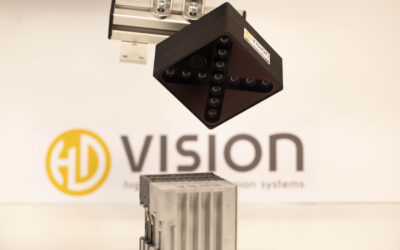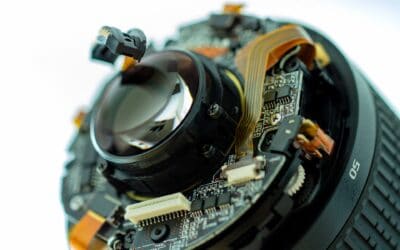This article was written in collaboration with our expert Dr. Silvan Lindner.
Merely linking individual production steps is no longer enough in an increasingly digital industry. To meet requirements for quality, safety and documentation, a digital twin – a 3D model – is increasingly being used. But how is a digital 1:1 image created from a real workpiece?
To create a reliable 3D model from a real object, two steps in the digitization process are essential:
- High-quality initial information (the point cloud).
- Reliable processing of the information into the actual 3D model
But before we can look at these aspects, one question needs to be addressed. It helps to classify where difficulties in 3D modeling can hide:
What does a 3D model consist of?
In principle, a digital 3D object representation is a very tightly meshed grid. This usually consists of small triangles or quadrilaterals, the polygons. For this reason, the mesh is also called a polygon mesh. The individual polygons or their nodes result from the points of the recorded point clouds.
In order to prevent this result from becoming edgy or inaccurate, there are numerous different procedures for optimizing the so-called meshing (formation of an object grid) and for correcting minor recording inaccuracies.
But before it comes to meshing, the acquired point cloud has to be of the highest possible quality…
Basic requirement for accurate 3D models: the perfect point cloud
Granted: The perfect point cloud by a flawless acquisition method does not exist. In addition, the various methods each have their own special properties. Depending on the required precision in the 3D model, they are suitable in different ways:
- Stereoscopy: Probably the most common imaging method, it scores high on standardization. It offers solid depth of field and data accuracy.
- Structure from Motion: SfM works more precisely than stereo approaches. The camera moves around the object to be measured in initially unknown positions. This precision comes at the price of a long recording time and the complex calculation of the point cloud.
- Light field: Similar to stereo, the light field works with a point-based recording. In contrast, however, this technology increases its precision by using a camera array. As a result, the light field can easily rival SfM – but scores points for faster acquisition.
With all methods, the system must be precisely calibrated in advance. Only in this way can any measurement inaccuracies be avoided as best as possible for a precise 3D model. The measurement distance should therefore also not vary too much.
From the point cloud to modeling
Once this data has been recorded, it must be converted into a solid 3D model. For this purpose, there are various methods to compensate for inaccurate polygons, outliers in the mesh or simply missing image information. There are numerous options for this step. However, the respective method does not always help to actually improve the final result as desired.
In consideration of the goals of the 3D model, it is therefore important to carefully apply the right methods to the mesh. Often, the individual approaches can even be combined with each other to generate an even better end result. The possibilities are legion. Therefore, we will limit ourselves here to a selection of the three most important methods for this so-called regression fit.
Poisson Surface Reconstruction
Probably the best known method is the Poisson Surface Reconstruction. Since the Poisson algorithm provides very accurate and beautiful 3D models and is available as an open source implementation at the same time, this speaks in favor of using this method. It uses for the calculation not only the available points from the point cloud, but also their normals – and all in one step. Thus, Poisson Surface Reconstruction achieves a low-noise result.
Marching Cubes
The Marching Cubes method is also frequently used. Here, too, a reliable mesh is to be extracted from the point cloud. However, Marching Cubes uses a different approach: the algorithm first divides the point cloud into a grid in order to determine from the individual grid squares which are inside or outside the object – or at the object boundary. Marching Cubes performs these steps several times to refine the result. This, of course, impacts the runtime of the algorithm. Additionally, this approach works only moderately well for fuzzy objects or object gaps.
Radial Basis Functions
A third, also popular approach is the use of radial basis functions (RBF). They create very smooth surfaces for 3D objects through the linear combination of radially symmetric basis functions. RBF are particularly well suited for the interpolation of scattered data – i.e. point clouds with unevenly distributed points. Thus, RBF can cope with uneven surfaces and even data gaps. However, these capabilities come at the price of the RBF method’s susceptibility to interference: even moderate noise represents a significant challenge for RBF.
There are countless other methods and algorithms. They draw their raison d’être from their respective different problem optimizations: The multitude of object textures and the quality of the point clouds make it difficult so far to perform only one operation on the point clouds. For detailed 3D models, the concatenation of different methods – and the refinement of the recording of point clouds – remains the standard.



